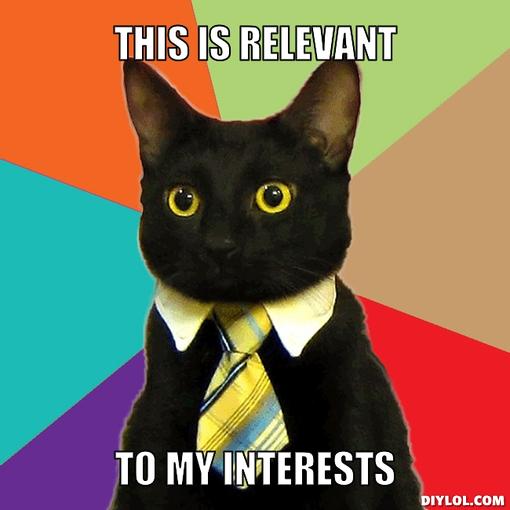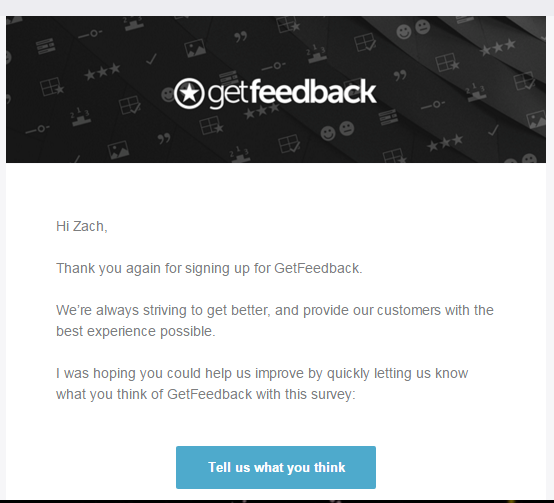“The future is already here. It’s just not evenly distributed yet.”
Attributed to the indelible William Gibson, this quote could be used to describe any range of technologies, but in the current marketing landscape, it’s best suited to characterize the state of personalization.
ALSO READ: 5 Strategies Every CMO is Planning for 2016
Marketers are not blind to the power of creating tailored experiences for their audience. That’s because the demands of consumers are changing. Their digital experiences are being personalized all around them through Netflix, Amazon, and their ilk. Now consumers expect the same in other aspects of their lives too.

Unfortunately, most marketers simply can’t deliver on these expectations. If knowing your customer is the first step to personalizing a marketing campaign, then 96 percent of marketers are struggling to create a single, comprehensive view of their customers.
But that’s not the end of the story. Like Gibson said, technology already exists that can bridge the gap between the expectations of consumers and the offerings of the marketers who court them. These tools have yet to reach widespread status, but they are available, and they are multiplying.
Before detailing examples of personalization in the wild, it’s important to examine how the technology works.
In his report, “Marketing Personalization: Maximizing Relevance and Revenue,” VentureBeat analyst Andrew Jones divides personalization into three sequential parts:
- Identity
- Content
- Delivery
Before digital media can be personalized, something about the consumer must be known — otherwise, what does a marketer have to work with?
Machine learning and complex algorithmic tools have rendered this ostensibly sound logic only half true. However, the majority of personalization is happening in the middle to bottom of the marketing funnel, because marketers have data on prospects at this stage stored in their marketing automation and CRM databases.
In one way or another, these prospects have traded their personal information in return for valuable content, thus, they have become “known.” This audience is much easier to track, target, and personalize for using behavioral data gathered from their web activity.
But these prospects are in the minority when compared with all traffic coming to an organization’s website. Most visitors are identified as anonymous, with only their IP address identified through a marketing automation platform or some other analytics system.

This wouldn’t be a problem if marketers’ main goal with personalization weren’t to reach more prospects. But marketers main goal with personalization is to reach more prospects.
If you design an email campaign that uses a dynamic field such as {{First Name}}, you’re using rules-based personalization. This type of personalization relies on if-then logic from marketing automation systems to scan the profile records for each recipient and pull their first name into the email.

Again, these prospects must be known, because the logic of the program waits for the “if” to be true (do we have this recipient’s first name in the system?) before triggering the “then” portion (put the name in the email).
The same template applies to behavioral personalization, wherein messaging is triggered based on behavioral data of a known prospect. If-then is fine for known prospects, but the logic fails for anonymous visitors. There is no “if,” so there can be no “then.”
This is where algorithmic tools come into play. These tools (a small, but growing set) use machine learning to make predictions on what messages or products anonymous visitors will find relevant. These predictions are derived from explicit behavior and implicit data patterns.
Sandy Hathaway, CMO of Avari, describes this type of personalization as “collaborative filtering” or “behavioral clustering:”
“Collaborative filtering is a method that builds a data model based on a person’s past behavior, as well as similar historical activities by other people. A principle behind collaborative filtering assumes that consumers are likely to enjoy items similar to those they’ve already purchased or downloaded, etc.”
Collaborative-based filtering is only one of several methods for using algorithmic personalization (or, what Hathaway’s company Avari has dubbed a “Recommendation Engine”), but it does presumably explain how Amazon, the reigning champion of personalization, can recommend items to anonymous visitors.
It also answers how marketers can take personalization to anonymous visitors using only their IP address and behavior as knowns.

Though powerful, algorithmic personalization software is not well distributed within the marketing industry. Most marketers are still toiling to build a more holistic view of their customers, but the technology for anonymous personalization (as paradoxical as that sounds) is becoming more available.
But it’s helpful to also examine personalization as it happens now, rather than how it will happen in the near future. Most personalization still uses a combination of data from known prospect profiles, such as demographic data, behavioral data, and past transaction records.
Even in its narrower application, this string of personalization still drives significant responses from prospects. Beyond field insertion, the most common tactics are based on behavioral and demographic triggers.
Here are examples from email, advertising, and on-site, respectively.
The first card a marketer plays when launching a personalization campaign should be email. Not only is email cheap, but it’s also effective and in-demand. It’s how 72 percent of consumers want to communicate with businesses.
In this example, Airbnb analyzed past behavior along with data patterns from other customers to deliver a personalized email to me that recommends which city to visit next. Asheville correlates to my previous visits to New Orleans, (i.e., a culture rich city that isn’t a metropolis) though New York is a bit more of a presumption based on where people like me visit.

Airbnb is likely using an algorithmic platform here, based purely on the scale of their operations. It would be difficult to create if-then rules for every single city in America with Airbnb, so this type of personalization needs a predictive formula in order to scale.
But not every email is like this. This missive from GetFeedback asks how I’m doing with the platform because a just started my trial a week or two ago.

Though much simpler, this email is no less effective. By triggering an email based on my past behavior, GetFeedback targets this message to a customer who they know has completed a survey in their platform.
Advertising
Ground zero for most personalization technology, advertising has long led the way in terms of using data to target internet users. The major shift now, as Jones highlights in his report, is away from purely third-party data, which is used in cookies and ad networks, to a mix of third- and first-party data.
This mix can be observed most prominently in the rise of data management platforms (DMPs) and the paid advertising options available on social networks such as Facebook and LinkedIn. For example, if you use LinkedIn’s advertising capabilities, you can construct campaigns that use firmographic and demographic data to target your known prospects or find new prospects who have similar characteristics.

I’ve never visited Datawatch’s website, so I’m not a candidate for retargeting through cookies. However, I do list my title as “Marketing Operations Analyst” which signals I’m likely importing data in and out of various systems all day.
This is probably why Datawatch personalized this ad for me — because I share characteristics (a job title or job functions) with their ideal audience.
Website
Beyond futuristic algorithm usage, most personalization on a company’s website happens on landing pages through the use of progressive profiling in marketing automation forms. This means that the fields on a form change based on what is known about the prospect as they return to the website, presumably, to download more content.
Progressive profiling can have a positive impact on conversion rates because it removes high friction questions like phone number and eliminates redundant data gathering. This results in a better experience for the visitor and raises the marketer’s conversion rates.

In more complex personalization setups, it’s possible to render dynamic content based on what is known about the prospect within the automation system. However, this is less common, and it becomes tedious at scale.
***
Personalization is more than a tactic; it’s becoming a critical part of the user experience a company offers its audience. It’s nestling down at the heart of how consumers judge brands.
The challenge is connecting the different experiences in a sequential chain of events to be called up at any time. Omnichannel vendors such as Sailthru are just now emerging, but they do offer a glimpse into feasible solutions.
Technology is evolving quickly to match the skyrocketing expectations of consumers. Will marketers be able to use these tools to architect a kaleidoscope of experiences whose various parts shift in and out of focus as the user engages in various actions?





